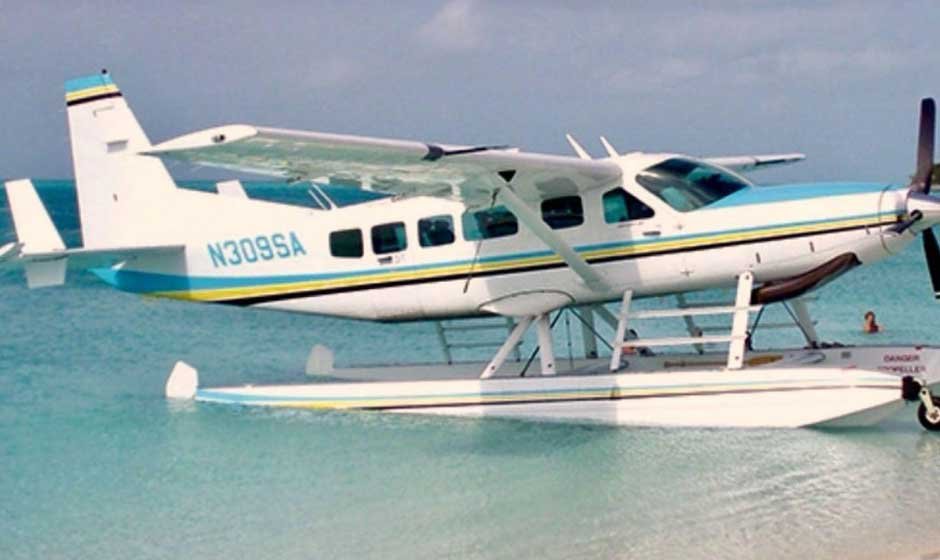Eric Weaver Discusses The Caravan Amphibian Aircraft and Its Versatile Capabilities

The Caravan Amphibian aircraft stands out as a reliable, multi-role performer in the world of utility aviation. Developed under the Cessna brand by Textron Aviation, it merges amphibious capability with rugged design, making it ideal for operations in regions with limited or no infrastructure. As noted by Eric Weaver, with short takeoff performance, a spacious and reconfigurable cabin, and a reputation for mechanical reliability, it supports missions ranging from humanitarian aid to eco-tourism.
Its PT6A engine offers dependable thrust and fuel efficiency, while the aircraft’s corrosion-resistant structure ensures longevity in hostile environments. Operators in areas like Alaska, the Caribbean, and Papua New Guinea have come to rely on the Caravan for its unmatched versatility. As demand grows for resilient, go-anywhere aviation solutions, this aircraft continues to prove itself as an indispensable tool across industries and continents.
Design and Structural Features
The Caravan Amphibian’s high-wing design enhances visibility and safety during low-altitude flights, especially in rugged or undeveloped environments. Its sturdy aluminum frame and corrosion-resistant components are tailored for harsh climates, from salty coastal air to humid tropical jungles. These features help extend the aircraft’s operational life and reduce maintenance frequency.
Equipped with retractable amphibious landing gear, the aircraft can land smoothly on both runways and water surfaces without modification. This dual function significantly reduces downtime and logistical planning, making it ideal for missions that demand flexibility and efficiency.
Inside, the aircraft features a spacious, configurable cabin. Seating arrangements can be adjusted for passengers, cargo, or a mix of both, allowing operators to shift roles with minimal effort. Humanitarian organizations and eco-tourism companies frequently take advantage of this versatility to adapt to changing demands. The interior is also designed to withstand frequent reconfigurations without compromising comfort or safety.
Technical Capabilities and Performance
Powered by a Pratt & Whitney PT6A turboprop engine, the Caravan Amphibian delivers reliable performance across a variety of mission profiles. Its powerplant provides the thrust needed for short takeoff distances, even from water, which is vital when operating in tight or improvised areas. Its engine is known for minimal failure rates, even in challenging climates.
It cruises comfortably at around 170 knots and offers a typical range of over 900 nautical miles, depending on payload and conditions. This endurance makes it suitable for extended routes between islands or across remote terrain where refueling options are limited. The aircraft’s fuel capacity and burn rate are optimized to balance range with operational costs.
Despite its rugged utility, the aircraft maintains efficient fuel consumption and a predictable flight envelope, earning it a reputation for being both dependable and cost-effective. Pilots appreciate its responsive handling and the confidence it inspires during challenging takeoffs and landings. Its avionics suite also supports situational awareness, enhancing safety during complex routes.
Multi-Role Utility and Operational Flexibility
The Caravan is often deployed in regions where infrastructure is minimal and weather conditions can be unpredictable. Its ability to land on lakes, rivers, and conventional airstrips enables seamless access to hard-to-reach places, making it a valuable asset in both civilian and government fleets. Missions in the Maldives, Papua New Guinea, and Northern Canada frequently depend on this kind of adaptability.
Beyond transportation, the aircraft supports a wide range of roles, including medical evacuations, disaster relief, and aerial surveillance. Its modular interior allows rapid reconfiguration, letting operators switch from cargo hauling to passenger service with minimal downtime. This adaptability has made it a favorite among charter services and emergency response teams alike. In post-disaster scenarios, its rapid deployment capabilities often make a critical difference in response times.
Practical Advantages for Operators
From a cost-efficiency standpoint, the Caravan offers a compelling balance between performance and operating expenses. Maintenance is straightforward thanks to its widely used engine and robust airframe, which translates to fewer delays and lower long-term costs. Operators also benefit from global parts availability and service networks.
Pilot training programs are readily available, and the aircraft’s intuitive handling makes it accessible to aviators transitioning from smaller platforms. This ease of use contributes to its popularity among regional operators and private owners looking for a dependable, multi-environment aircraft. Its cockpit ergonomics and straightforward systems also make it ideal for recurrent training and multi-crew operations.
In the niche category of amphibious aircraft, the Caravan Amphibian holds a well-established position. It competes favorably with other utility seaplanes, offering a blend of modern avionics, operational range, and manufacturer support that many rivals lack.
Interest in amphibious aviation continues to grow, particularly in tourism, logistics, and public service sectors. With rising demand for access to remote destinations and sustainable transport solutions, this aircraft remains a strategic investment for operators looking to expand their reach without sacrificing reliability.



